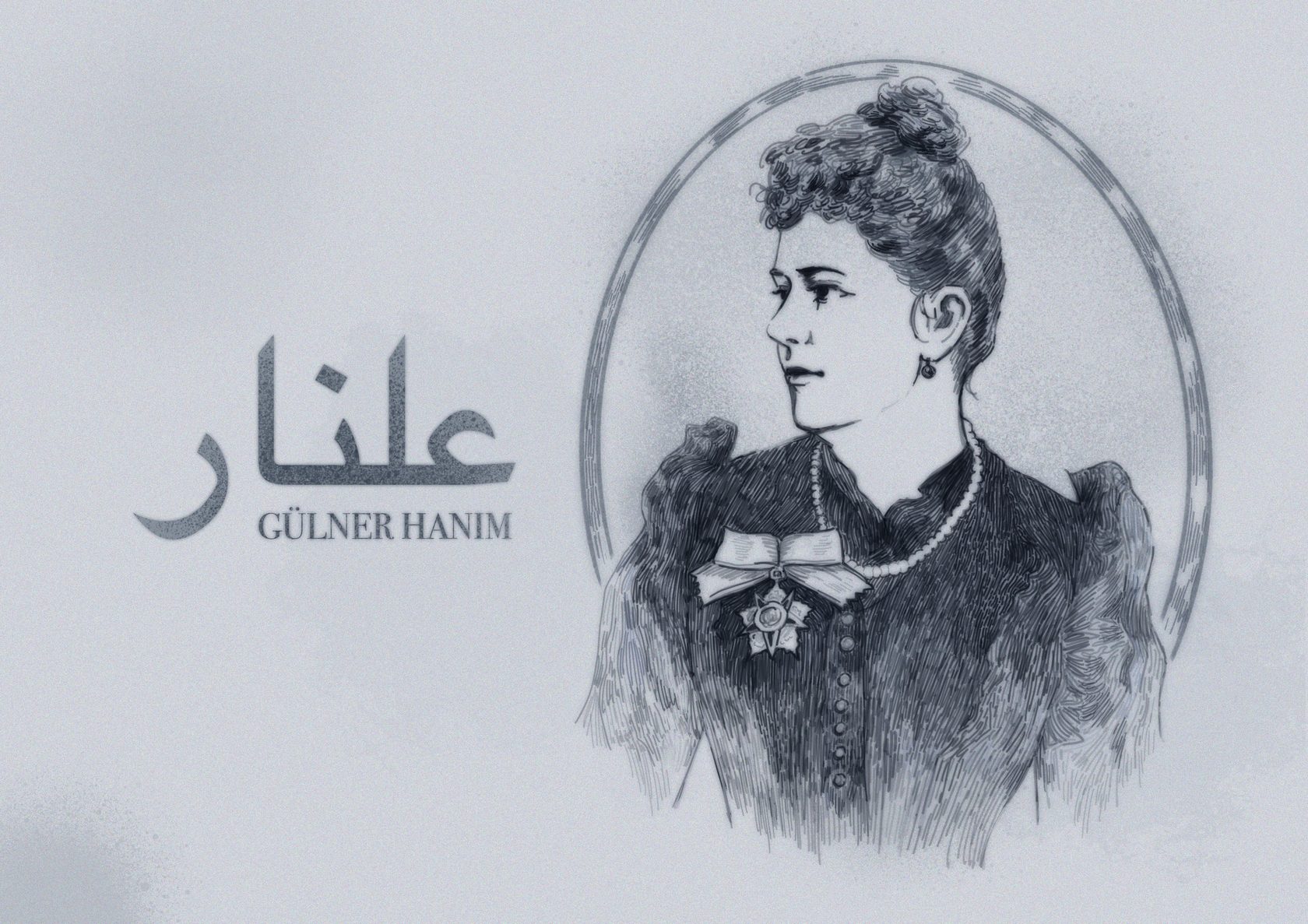Язык / Language:
Russian / Русский
English
Всероссийский съезд мусульманок
Гомуми мөслимәләр съезды
В 1917 году 24-27 апреля в Казани прошёл Общий съезд мусульманок из разных мусульманских регионов — Крым, Кавказ, Казахстан, Литва, Сибирь и Туркестан. На нём обсуждались проблемы избирательных прав женщин, их участие в публичной сфере, правовое и семейное положение женщин, вопрос о национальности. Было избрано Центральное бюро мусульманок России, в которое вошли Гульсум Асфандиярова, Диляра Булгакова, Захида Бурнашева, Рауза Чанышева-Султангалиева, Салима Якубова. Они и еще четыре женщины: Криницкая (из литовских татар), Фатима Кулахметова, Хадича Таначева, Ильгамия Туктарова — были избраны представительницами казанского на московском общемусульманском съезде.


tags: Деколонизация,Ислам, Исследования, Коренные народы, Расизм, СССР, Россия
Хадича Таначева, председательница съезда, открыла его: «В предшествующее время прежнее государство не позволяло нам обсуждать наше бесправное и угнетенное положение. Теперь прежней власти нет, революция дала нам свободу. От имени Центрального бюро хочу поделиться с вами этой радостью и поздравить съезд от чистого сердца… Съезд ставит своей задачей обсудить лишь наиболее важные проблемы, те, которые будут представлены рассмотрению Всеобщего мусульманского съезда в Москве».
Один из важнейших итогов казанского съезда - положение «О равноправии мужчин и женщин в исламе», которое состояло из трех пунктов: «По условиям шариата мужчина и женщина одно», «По шариату у женщин есть право участвовать в политической и общественной деятельности. Поэтому женщины на основе шариата могут участвовать в выборах», «В шариате нет предписания о ношении хиджаба женщинами и о укрывании лиц».
На съезде также решались организационные вопросы об объединении всех женских организаций в России в одну и учреждение Центрального комитета как временного органа, утверждалось равенство политических прав женщин и мужчин, участие женщин в выборах депутатов Учредительного собрания, формулировались требования гражданско-правового характера в области семейно-брачных отношений.

Одним из главных символов съезда стала красная атласная лента, она ознаменовывала перемены для мусульман и мусульманок в России.
Инициаторками съезда были Зейнаб Алиева, Фатима Алкина, Сара Ахмерова, Мариам Губайдуллина, Хадича Мустафина, Зухра Салихова, Хадича Таначева.
Инициаторками съезда были Зейнаб Алиева, Фатима Алкина, Сара Ахмерова, Мариам Губайдуллина, Хадича Мустафина, Зухра Салихова, Хадича Таначева.

Ольга Лебедева
Ольга Лебедева, урожденная Ольга Сергеевна Барщева — российская переводчица, учёная востоковедения. Училась у Каюма Насыри, знала турецкий, татарский, арабский, французский языки. Была членом общества археологии, истории и этнографии Казанского университета, куда входили крупнейшие учёные и просветители той эпохи.


С 1881 года Лебедева занималась переводами в Стамбуле. Работы Лебедевой были оценены султаном Абдул-Хамид II, который наградил ее орденом Милосердия II степени (Шевкат нишаны) за заслуги перед востоковедением.
В 1890-1893 годах ею были переведены на турецкий язык и изданы произведения Пушкина, Лермонтова, Толстого.
В статье «Мусульманский феминизм» Фаизов называет именно Ольгу Лебедеву первой мусульманской феминисткой. На XII Международном конгрессе ориенталистов в 1899 году Ольга Лебедева подготовила доклад о культуре, истории и положении казанских татар, часть доклада называлась «Свобода мусульманок». В 1900 году выходит книга «Об эмансипации мусульманской женщины», в которой Лебедева поднимает проблемы равноправия женщины и мужчины в исламе, называет причину существующего неравенства — неправильное толкование Корана средневековыми мусульманскими богословами.
В статье «Мусульманский феминизм» Фаизов называет именно Ольгу Лебедеву первой мусульманской феминисткой. На XII Международном конгрессе ориенталистов в 1899 году Ольга Лебедева подготовила доклад о культуре, истории и положении казанских татар, часть доклада называлась «Свобода мусульманок». В 1900 году выходит книга «Об эмансипации мусульманской женщины», в которой Лебедева поднимает проблемы равноправия женщины и мужчины в исламе, называет причину существующего неравенства — неправильное толкование Корана средневековыми мусульманскими богословами.
Также Ольга Лебедева перевела работу Фатмы Алие на французский язык — «Нисвал-и Ислам», где рассматривалось положение женщин в мусульманском обществе.
Информация об Ольге Лебедевой обрывается в 1913 году, её дальнейшая судьба неизвестна.
Информация об Ольге Лебедевой обрывается в 1913 году, её дальнейшая судьба неизвестна.
Shiancore (Халимова Диана) графический дизайнер и иллюстратор из Казани, Россия. Инстаграм: https://www.instagram.com/shiancore/.
Биктимирова Александра - Aleksandra, студентка, феминистка; для обратной связи — телеграм @grewawewevna или почта femmekytrew@mail.ru, тг-канал: https://t.me/zdretoya.
Биктимирова Александра - Aleksandra, студентка, феминистка; для обратной связи — телеграм @grewawewevna или почта femmekytrew@mail.ru, тг-канал: https://t.me/zdretoya.
All-Russian Congress of Muslim Women
Гомуми мөслимәләр съезды
In 1917, on April 24-27, a General Congress of Muslim women from different Muslim regions – Crimea, the Caucasus, Kazakhstan, Lithuania, Siberia, and Turkestan, was held in Kazan. It discussed the problems of women's electoral rights, their participation in the public sphere, the legal and marital status of women, the issue of nationality. The Central Bureau of Muslim Women of Russia was elected, which included Gulsum Asfandiyarova, Dilyara Bulgakova, Zakhida Burnasheva, Rauza Chanyshev-Sultangalieva, Salima Yakubova. They and four other women: Krinitskaya (from the Lithuanian Tatars), Fatima Kulakhmetova, Khadicha Tanacheva, Ilgamiya Tuktarova, were elected representatives of Kazan at the Moscow All-Muslim Congress.


tags: Decolonization, Islam, Research, Indigenous Peoples, Racism, USSR, Russia
Khadicha Tanacheva, chairwoman of the congress, opened it: “In the preceding time, the previous state did not allow us to discuss our powerless and oppressed situation. Now the former government is gone, the revolution has given us freedom. On behalf of the Central Bureau, I would like to share this joy with you and congratulate the congress from the bottom of my heart ... The congress aims to discuss only the most important problems, those that will be presented to the consideration of the General Muslim Congress in Moscow."
One of the most important results of the Kazan congress, the provision “On the equality of men and women in Islam” consisted of three points: “According to the terms of Sharia, a man and a woman are one,” “According to Sharia, women have the right to participate in political and social activities. Therefore, women on the basis of Sharia can participate in elections "," In Sharia, there is no requirement for women to wear a hijab and to cover their faces."
The congress also resolved organizational issues to unite all women's organizations in Russia into one and the establishment of the Central Committee as a temporary institution. It also claimed the equality of men and women's political rights, as well as the participation of women in the elections of deputies to the Constituent Assembly, and formulated civil requirements in the field of family and marriage relations.

One of the main symbols of the congress was the red satin ribbon, which marked a change for Muslims and Muslim women in Russia.
The initiators of the congress were Zeynab Aliyeva, Fatima Alkina, Sara Akhmerova, Mariam Gubaidullina, Khadicha Mustafina, Zukhra Salikhova, Khadicha Tanacheva.
The initiators of the congress were Zeynab Aliyeva, Fatima Alkina, Sara Akhmerova, Mariam Gubaidullina, Khadicha Mustafina, Zukhra Salikhova, Khadicha Tanacheva.

Olga Lebedeva
Olga Lebedeva – Olga Sergeevna Barshcheva – Russian translator, academic Orientalist. She was a student of Kayum Nasyri, knew Turkish, Tatar, Arabic, French. Olga was a member of the Society of Archeology, History and Ethnography of Kazan University, which included the largest scientists and educators of that era.


Since 1881, Lebedeva has worked as a translator in Istanbul. Her works were appreciated by Ottoman Sultan Abdul Hamid II, who awarded her the Order of Mercy of the II Degree (Shevkat Nishany) for her services to oriental studies.
In 1890-1893 she translated into Turkish and published works by Pushkin, Lermontov, Tolstoy.
In the article "Muslim Feminism" Faizov calls Olga Lebedeva the first Muslim feminist. At the 12th International Congress of Orientalists in 1899, Olga Lebedeva prepared a report on the culture, history, and position of the Kazan Tatars, and part of the report was called "Freedom of Muslim Women." In 1900 the book "On Emancipation of Muslim Women" was published, in which Lebedeva raises the problem of the equality of women and men in Islam, and describes the misinterpretation of the Koran by medieval Muslim theologians as the cause of the existing inequality.
In the article "Muslim Feminism" Faizov calls Olga Lebedeva the first Muslim feminist. At the 12th International Congress of Orientalists in 1899, Olga Lebedeva prepared a report on the culture, history, and position of the Kazan Tatars, and part of the report was called "Freedom of Muslim Women." In 1900 the book "On Emancipation of Muslim Women" was published, in which Lebedeva raises the problem of the equality of women and men in Islam, and describes the misinterpretation of the Koran by medieval Muslim theologians as the cause of the existing inequality.
Olga Lebedeva also translated the work of Fatma Aliye "Nisval-i Islam" into French – in this work, Fatma Aliye examined the position of women in Muslim society.
Our knowledge about Olga Lebedeva ends in 1913; her further fate is unknown.
Our knowledge about Olga Lebedeva ends in 1913; her further fate is unknown.
Text: Alexandra Biktimirova
Translation: Irina Sharkadiy
Worked on the portraits:
Shiancore (Diana Khalimova), graphic designer and illustrator from Kazan, Russia. Social
media link: https://www.instagram.com/shiancore/
Biktimirova Aleksandra, student, feminist; for feedback – telegram @grewawewevna or via
e-mail: femmekytrew@mail.ru, telegram-channel: https://t.me/zdretoya
Translation: Irina Sharkadiy
Worked on the portraits:
Shiancore (Diana Khalimova), graphic designer and illustrator from Kazan, Russia. Social
media link: https://www.instagram.com/shiancore/
Biktimirova Aleksandra, student, feminist; for feedback – telegram @grewawewevna or via
e-mail: femmekytrew@mail.ru, telegram-channel: https://t.me/zdretoya